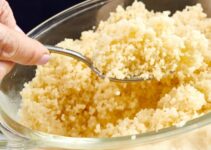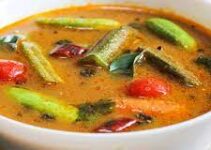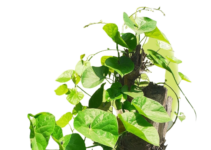What is Vitiligo?
Vitiligo is a skin disorder wherein white patches on the skin are observed due to loss of skin pigment. This condition occurs when melanocytes, the cells responsible for producing the pigment melanin, are destroyed or stop functioning. The exact cause of leucoderma or vitiligo is yet to be discovered, but it is believed to occur by a combination of genetic, autoimmune, and environmental factors. Its progression and severity can vary from person to person and have a significant impact on a person’s self-esteem and body image. Treatment options for vitiligo include Ayurvedic medicines, topical steroids, phototherapy, laser therapy, and skin grafting, among others.
Ayurvedic Treatments for Vitiligo
Ayurveda offers suitable treatments and approaches to manage vitiligo (leucoderma).
- Dietary Changes: Some Ayurvedic practitioners recommend dietary changes that involve avoiding certain foods like sour or citrus fruits, non-vegetarian food, and incompatible food combinations. They suggest increasing the intake of ghee, neem, and bitter gourds.
- Herbal Remedies: Ayurvedic herbs are often used to treat vitiligo. Herbs like Bakuchi (Psoralea corylifolia), Manjistha (Rubia cordifolia), and Khadir (Acacia catechu) are believed to have properties that can help in repigmentation. These herbs can be used both topically and internally.
- Panchakarma Therapy: Some Ayurvedic practitioners recommend Panchakarma, a detoxification and cleansing therapy. It involves procedures like Virechana (purgation) and Basti (enema) to balance the doshas and purify the body.
- Ayurvedic Oils: Certain Ayurvedic oils, such as Bakuchiol oil, are applied topically to affected areas to stimulate repigmentation.
- Lifestyle Modifications: Ayurveda often suggests lifestyle changes to reduce stress, as stress is believed to exacerbate the condition. Practices like yoga and meditation may be recommended.
- Customized Treatment: Ayurvedic treatment for vitiligo is typically individualised based on a person’s unique constitution (dosha), the severity of the condition, and other factors.
- Agnijith, an Ayurvedic medicine, can produce pigmentation by blocking the de-pigmentation problems on skin layers and increasing blood circulation.
- Applying the mixture of Turmeric and mustard oil helps remove the white patches and cures vitiligo.
- Bakuchi and coconut oil mixture is another effective remedy for vitiligo. Apply the mixture, keep it for 15 minutes and then wash it off.
Ayurvedic herbs for vitiligo treatment
- Bakuchi (Psoralea Corylifolia): Bakuchi minimises the white patches and rejuvenates the skin. The powders of ayurvedic herbs like khadi (skin), Chitral (root), jatamansi (origin) and aamalaki (fruit) help in re-pigmentation.
- Manjistha (Rubia Cordifolia): The herb is full of ayurvedic properties and ensures the restoration of the standard skin colour.
- Neem (Azadirachta Indica): Neem is known for its antioxidant properties, which destroy free radicals in the body, thereby protecting the melanocytes.
- Haritaki (Terminalia Chebula): Haritaki destroys free radicals and is good for the health of melanocytes. It is recommended in the severe cases of Vitiligo.
- Giloe (Tinospora Cordifilia): Giloe is one of the best Ayurvedic medicines for treating vitiligo. It prevents the damage of the melanocytes.
- Khadira (Acacia Catechu): It reduces the white patches present on the skin and helps to cure vitiligo.
Ayurvedic ingredients for vitiligo
- Powdered root of Citraka (leadwort)-1 part, Trikațu-1 part and honey-parts mixed in Gomūtra (cow’s urine) and stored in an earthen pot for 15 days to be taken in 6 to 12g. dose twice a day. It is to be used under the guidance of a specialist.
- Decoction of equal part of fruit rind of Amalakt (embolic myrobalan), Khair-14 to 28 ml. to be taken with 10 g. honey twice a day.
- Lepa (plaster) of equal part of Suddha Manahila (red arsenic) and Bhasma of Apāmărga (prickly chaff) mixed in Gouüta (cow’s urine) to be applied on the spot. It is to be used with caution on account of its strong ingredients.
- Lepa (plaster) of equal part of the fruit of Gunia (wild liquorice) and root of Citraka (leadwort) bruised in Gomūtra (cow’s urine).
- Lepa (plaster) of equal part of powder of seed of Karañja (Indian beach), the root of Arka (mudar), leaf of Aragvadha (cassia), the stem of Snuhi (milk hedge) and a leaf of Campaka prepared by bruising in Gomūtra (cow’s urine).
- Take an equal part of Kakamãcī, the seed of Cakrarnarda, the root of Kustha (koot), the fruit of Pippalí (long pepper), grind in Aja Mūtra (goat’s urine). It will be applied by making a paste in water as and when required.





